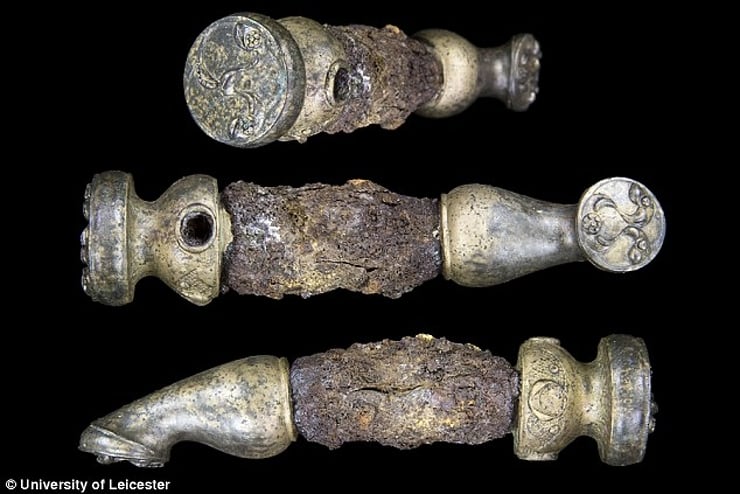16.10.2014 2200 years old carriage
Categories: Calendar , Nálezy nejenom s detektorem ve Velké Británii a Irsku
Archaeologists from the University of Leicester have discovered fittings from a 2,200-year-old chariot. Experts believe it was dismantled or never reassembled. It probably belonged to a nobleman or warrior.
The parts from the chariot were discovered by archaeologists during research at Burrough Hill. They were shocked by the sheer weight of their discovery. The ornate fittings were apparently buried as a religious offering.
The archaeologists also found equestrian equipment such as a horse comb or two curved blades, which were probably used for hoof care. The archaeological team first came across a piece of bronze. Then they uncovered other pieces of equipment.
They carried out their excavation at the aforementioned Burrough Hill, where a hillfort stood in the Iron Age. It's about 210 metres above sea level and overlooks the surrounding countryside for miles. The hillfort was founded at the beginning of the Iron Age. People abandoned it in the Middle Ages, when the land was used as farmland.
Students were part of the archaeological team and it was they who came across the first artefact. Then they found more and more. When they started cleaning, they noticed decorative patterns. Some are similar to the flag of the Isle of Man.
They discovered various pieces of carriage and horse equipment. "I realised that I was actually uncovering a treasure that someone had carefully placed in this place hundreds of years ago. It's a lifetime find for me," said Nora Battermann, who was among the students who made the discovery.
Based on the placement of each artifact, it's obvious they were placed in a box of some sort, which was then ritually burned and buried. "The function of the iron tools is still a bit of a mystery, but given the equestrian nature of the hoard, it's possible that they were indeed associated with horse care. One piece in particular looks like a modern horse comb. While the two curved blades were probably used to maintain horses' hooves or make harness parts," said archaeologist John Thomas.
The artefacts have been taken to the University of Leicester for further analysis. Archaeologists planned to present the finds to the public in a special exhibition.





Sources: www.dailymail.co.uk
The article is included in categories: